Today’s consumers expect you to meet them where they are—that’s where an omnichannel approach comes in.
In this article, we’ll explain what an omnichannel strategy is and share five steps for creating a unified customer experience.
Let’s get started.
What Is Omnichannel?
Omnichannel is an approach to customer engagement that integrates all communication channels to create a unified experience.
If you’re wondering what omnichannel means, literally, it’s helpful to know that “omni” means “all.” And “channel” refers to any touchpoint between a brand and customer, as illustrated below.
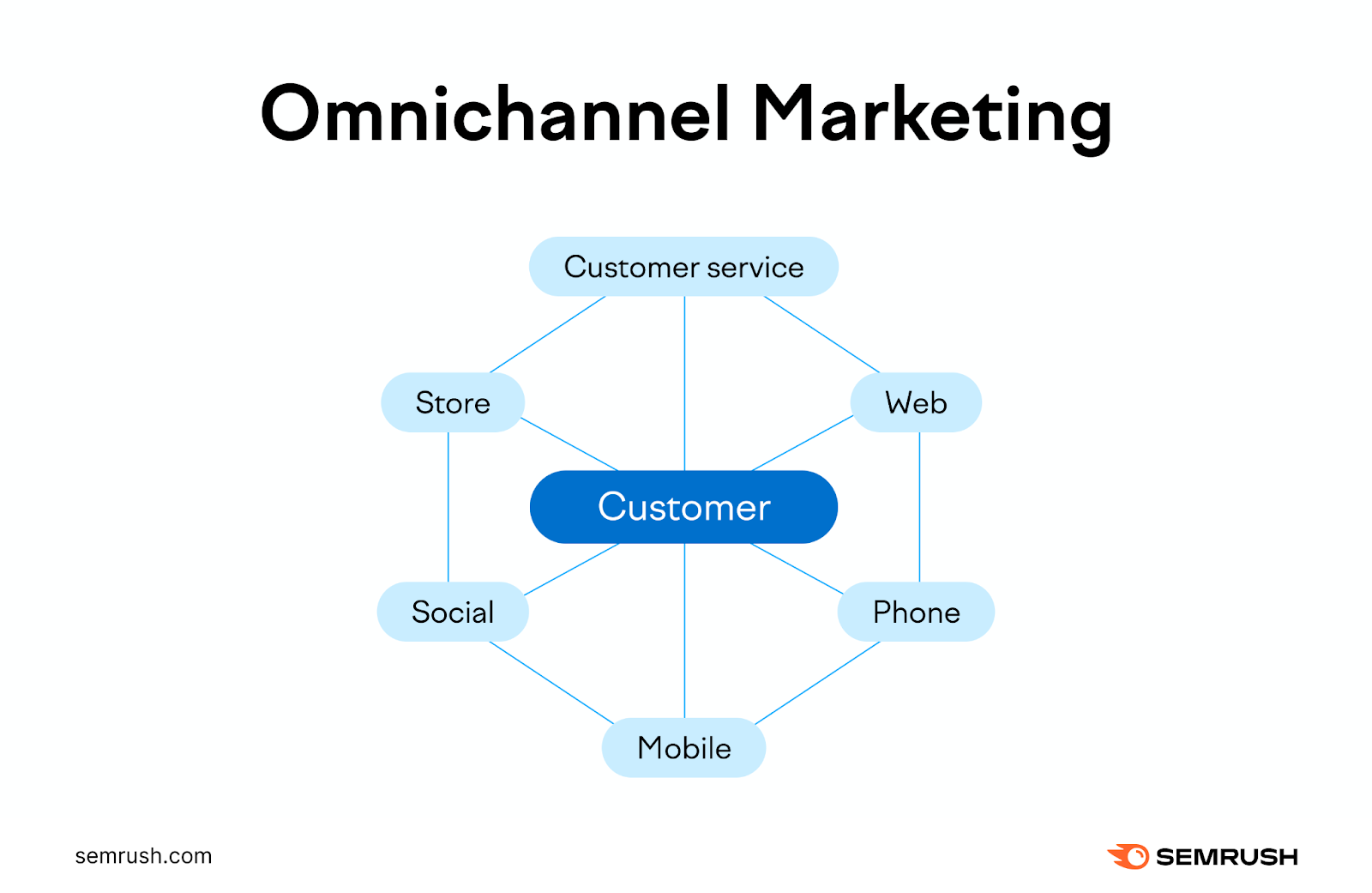
What does this look like in practice?
Say a consumer sees an ad for a dress on their mobile device. They then look at photos of other people wearing it on social media and grab a discount code before deciding to buy.
But another person may prefer to do some research on their laptop and later try the dress on in a physical store. Then, they might ask customer support a question on the brand’s app before purchasing.
All of these separate touchpoints work together to ensure customer interactions are connected and consistent. They provide a seamless experience to boost customer satisfaction.
This is why an omnichannel strategy is so important.
While many people think of omnichannel marketing specifically, an omnichannel approach spans marketing, sales, and customer support.
It encompasses both online channels (including your website, social media platforms, app, email, and live chat) and offline channels (things like retail stores, in-person events, and call centers).
All of your touchpoints should be consistent and complementary—no matter where customers find them—and guide each person to their destination.
Omnichannel vs. Multichannel
An omnichannel approach integrates all channels seamlessly.
There’s one cohesive experience for customers—no matter how they’re reaching out. And all touchpoints are connected to guide customers throughout their journeys.
In a multichannel approach, users can interact with your business via multiple channels.
But those channels are disconnected and conversations become siloed. They’re unable to reference other interactions on other channels.
Here’s what each looks like:
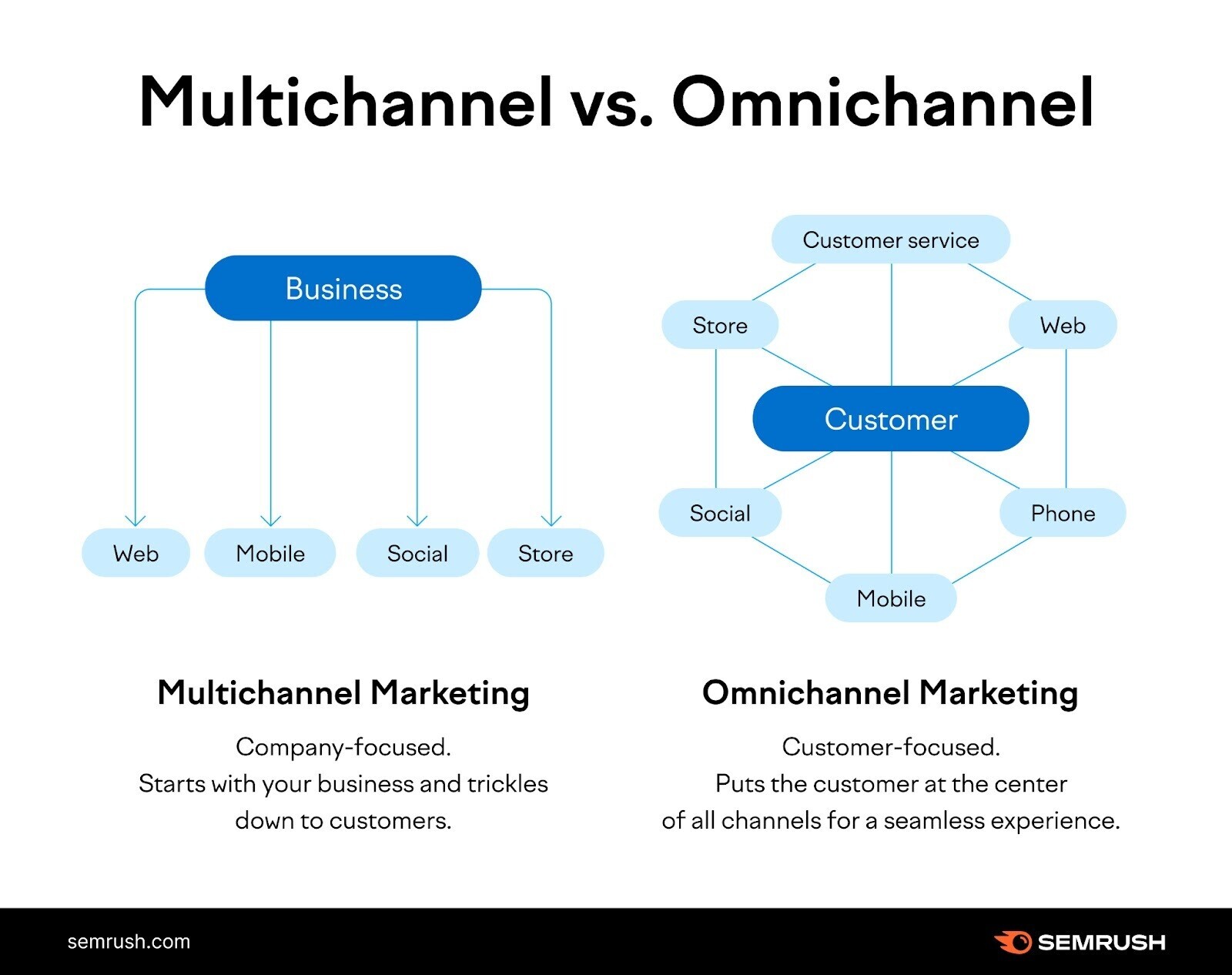
Let’s say you own a coffee shop that uses an in-store mobile app, email marketing, Facebook, and Instagram. Customers can contact you via each of those channels.
If you have a multichannel approach, you need to manage conversations with the same customers separately.
But if you have an omnichannel approach, customers can navigate between all of these channels and pick up the same conversation with different employees.
Let’s look at the advantages of this approach in more detail.
What Are the Benefits of Omnichannel Experiences?
These are three of the main benefits of omnichannel experiences:
Helps with Customer Acquisition and Retention
An omnichannel approach helps you more easily attract new customers. And keep them coming back.
According to this study, four factors have the biggest impact on customer retention and acquisition—trust, commitment, communication, and conflict handling.
Each of these is a natural byproduct of a well-organized omnichannel strategy. It shows customers that you’re with them every step of the way. And that you’re ready to pick up where they left off with their last interaction.
And it could be the reason customers stick with you instead of shopping around.
Positions Employees to Deliver an Exceptional Customer Experience
Setting up omnichannel communication ensures your employees have the right resources to make their jobs easier.
Seamless connection means employees are prepared for every interaction because they all see the same up-to-date information.
And being able to access all customer interactions from any channel helps employees meet high customer expectations with confidence.
Builds Long-Term Customer Relationships
Building relationships with your customers doesn’t only encourage loyalty. It also results in higher customer lifetime value—the total revenue a single customer can bring a business.
Omnichannel helps create excellent experiences and long-term relationships. And research shows this makes customers more willing to:
- Recommend your company on social media (83%)
- Buy more products and services from you (89%)
- Go out of their way to purchase from your brand (82%)
As well as increased revenue, this loyalty results in positive word-of-mouth marketing.
Happy customers become ambassadors, providing reviews and recommendations that strengthen their own and other customers’ commitment to your brand.
5 Steps for a Successful Omnichannel Strategy
Becoming omnichannel means implementing strategies and modern technology to deal with ever-changing customer needs.
Here are the five most important steps for a successful omnichannel strategy:
1. Research Which Channels Your Audience Uses
Start by finding out where and how your customers want to interact with your brand. Knowing (and engaging via) your customers’ preferred channels will position you to engage with them more.
This takes some research. But you can use Google Analytics to see which channels direct traffic to your site and which channels lead to conversions.
If social media is a big part of your engagement strategy, you can analyze how those channels perform with Semrush Social.
Go to Social Analytics and connect your profiles.
First, navigate to the “Facebook” tab. Where you can see a detailed breakdown of your audience, your top posts, and more.
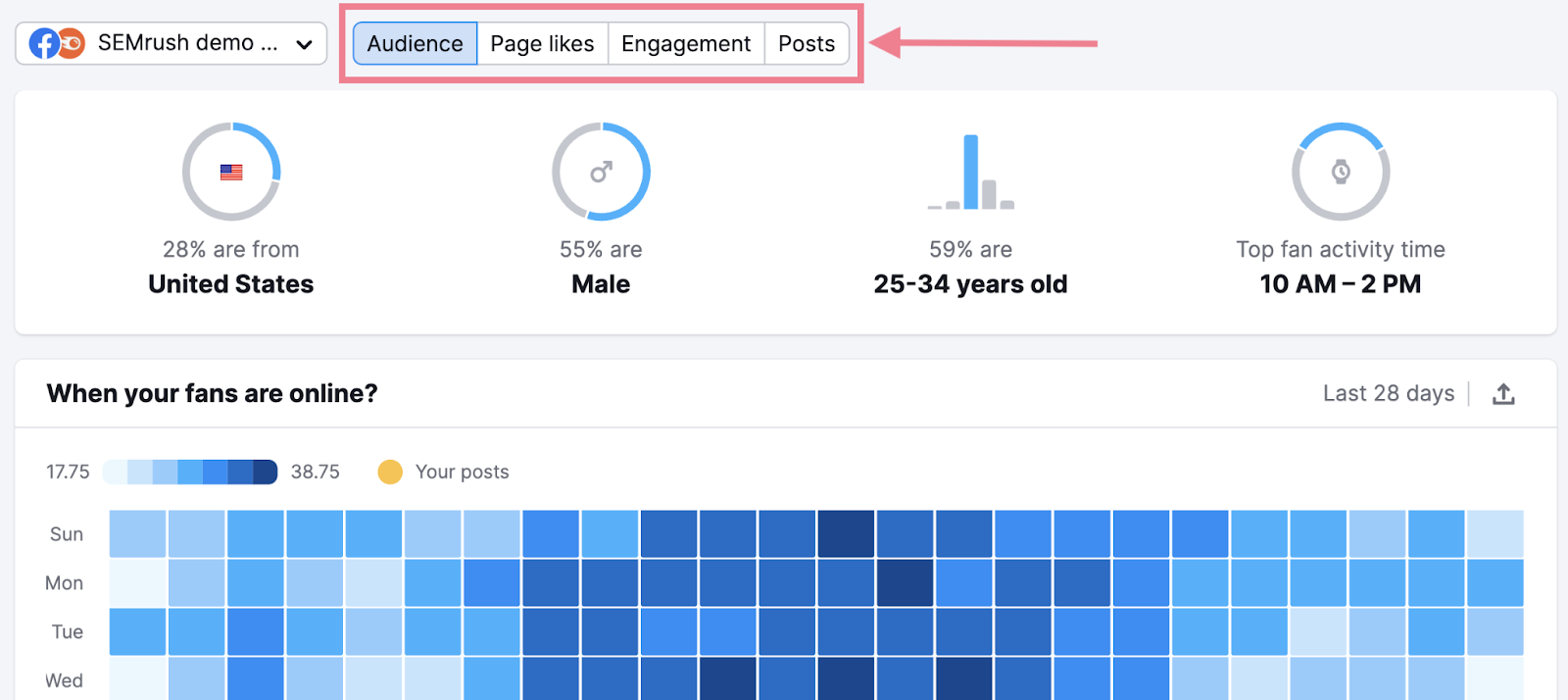
Repeat this for Instagram and LinkedIn.
It’ll give you a better understanding of who your audience is and how they engage on specific platforms.
2. Map the Customer Journey
Customer journey mapping helps you understand how customers go from first touchpoint to purchase. And allows you to align your goals more closely with your prospects and buyers.
You can use your marketing funnel as a model to map out all the pre-purchase, purchase, and post-purchase stages and channels your audience goes through.
The marketing funnel represents the buying stages people go through after discovering a business. It includes four main stages:
- Awareness
- Consideration
- Conversion
- Loyalty
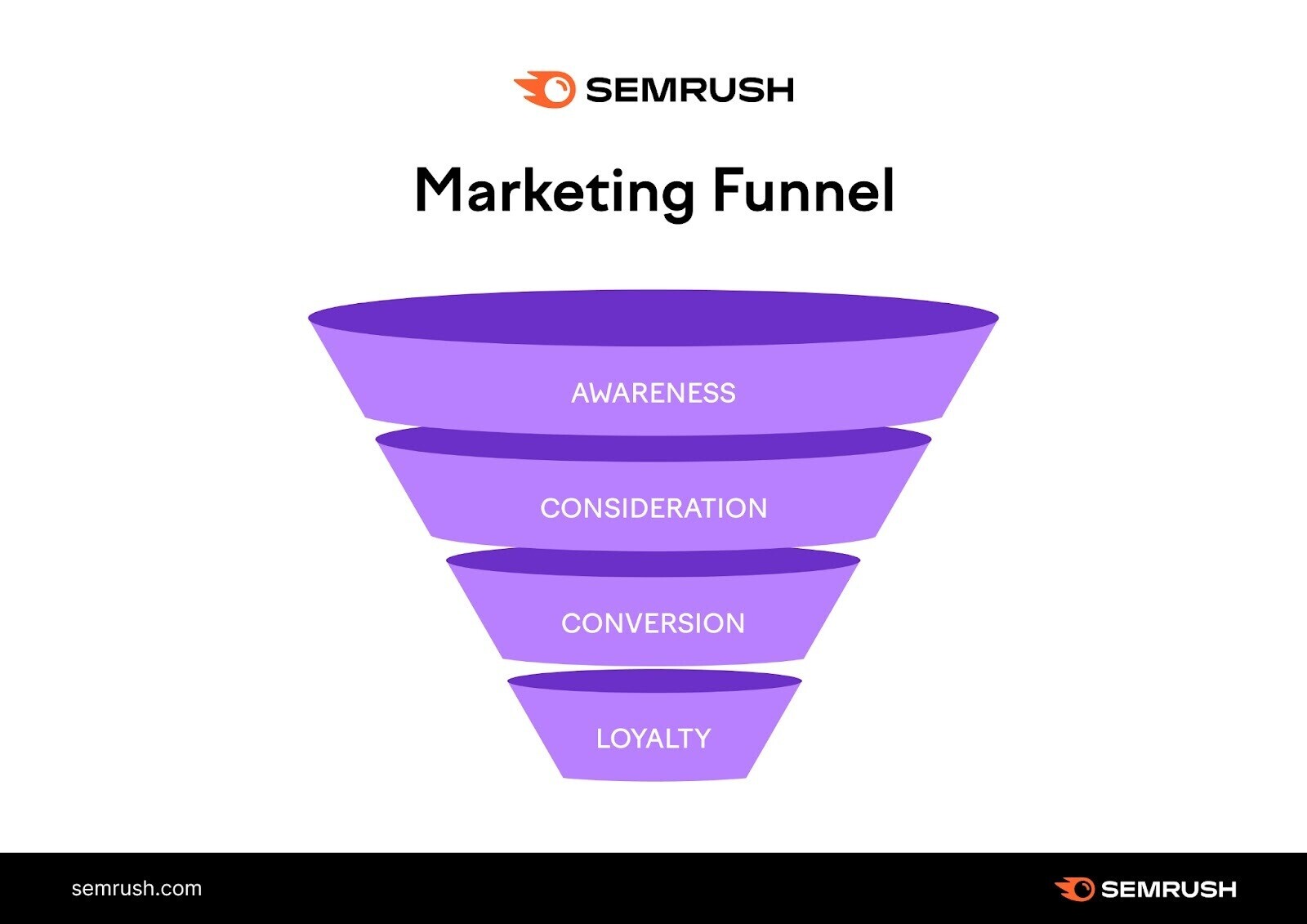
Consider the channels people use to learn about your product, make purchases, and contact customer support. Then, ask where they might be experiencing friction with your brand.
For example, you may find your website has a good flow but makes it hard to buy on the final page.
Write all of these touchpoints and observations down on a whiteboard or sticky notes to visualize the full journey. Then, identify any gaps and consider how you could bridge them.
Mapping and tweaking your customer journey as behaviors and technology change is the basis of any successful omnichannel strategy.
By understanding how every single channel plays a part, you can create one seamless user experience that moves at each person’s chosen pace.
3. Integrate Your Channels
Once you know which channels are important to moving customers through their journey, make sure those channels are integrated at every step. To ensure that omnichannel communication is actually possible.
Ask yourself these three questions:
- How can your chosen channels all communicate with each other seamlessly?
- Will you use one platform or multiple tools that work together?
- What platforms need automation to make omnichannel work?
For truly unified and personalized experiences that people love, you need to centralize your customer data.
That means using real-time customer relationship management (CRM) software to integrate with each channel you’re using.
CRM software can integrate with email, social media, phone, and SMS, and more. That means it can help you manage and coordinate interactions across various channels.
For instance, say a customer starts an interaction on live chat. The centralized database will track their information.
If they return via phone call, the employee who answers will be able to see their information so the customer can seamlessly continue their interaction without having to repeat information.
4. Develop Consistent Messaging
All of your omnichannel efforts should involve a consistent, easily identifiable brand voice. This helps increase trust with your audience.
Here’s how Starbucks gets its functional and expressive tone across on various channels:
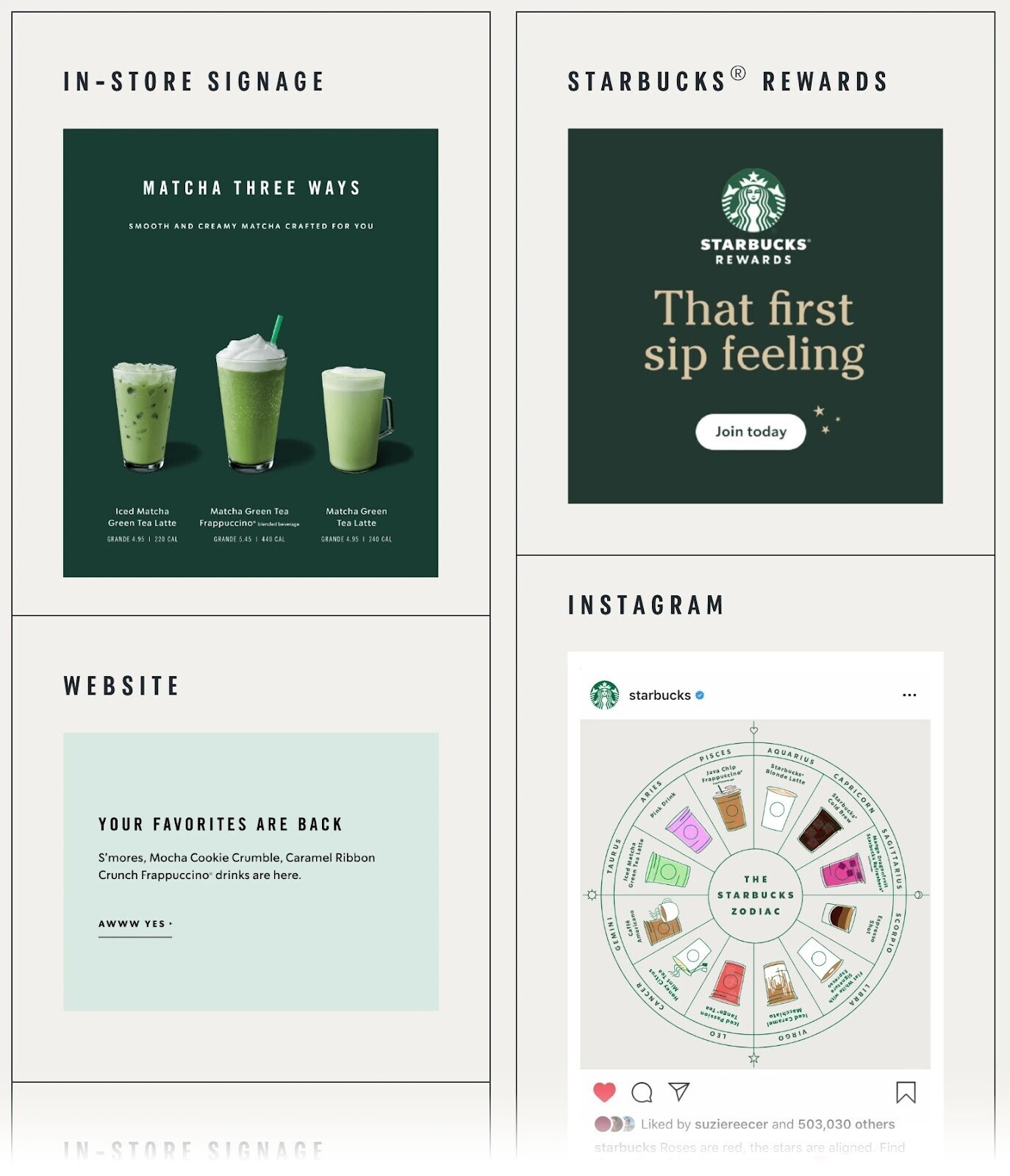
Wherever customers find the brand, they experience the same brand voice.
You’ll want to do this for your company as well.
Let’s say customers often ask your support agents how best to use your products. You can use the same messaging they leverage in their one-on-one interactions on your social media accounts to reach an even wider audience.
We use our Instagram account to do just that:
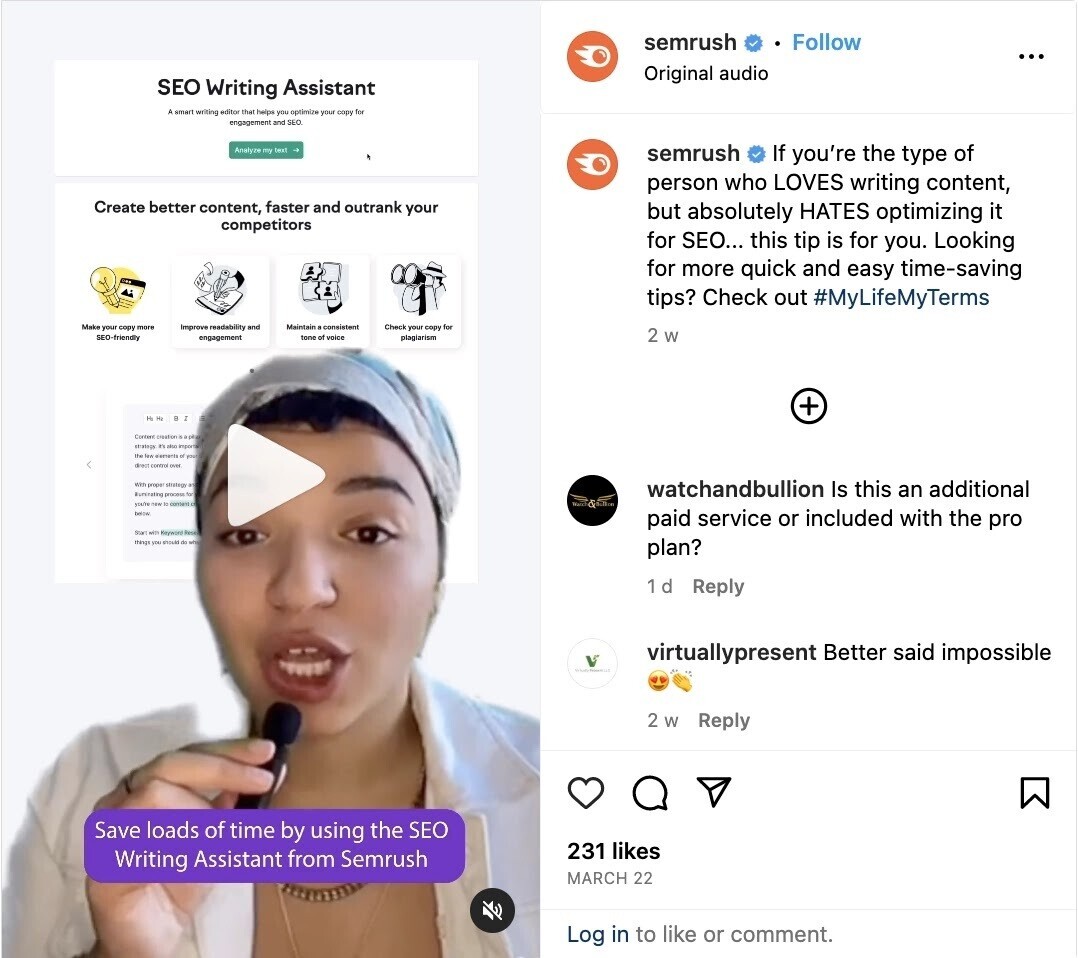
And make it easy for all key stakeholders to stay on the same page in terms of brand voice. This could be web designers, digital marketing specialists, support agents, copywriters, etc.
Marketing Calendar (shown below) makes it easy to ensure everyone is on the same page by providing visibility into campaigns and the corresponding messaging across all your channels.
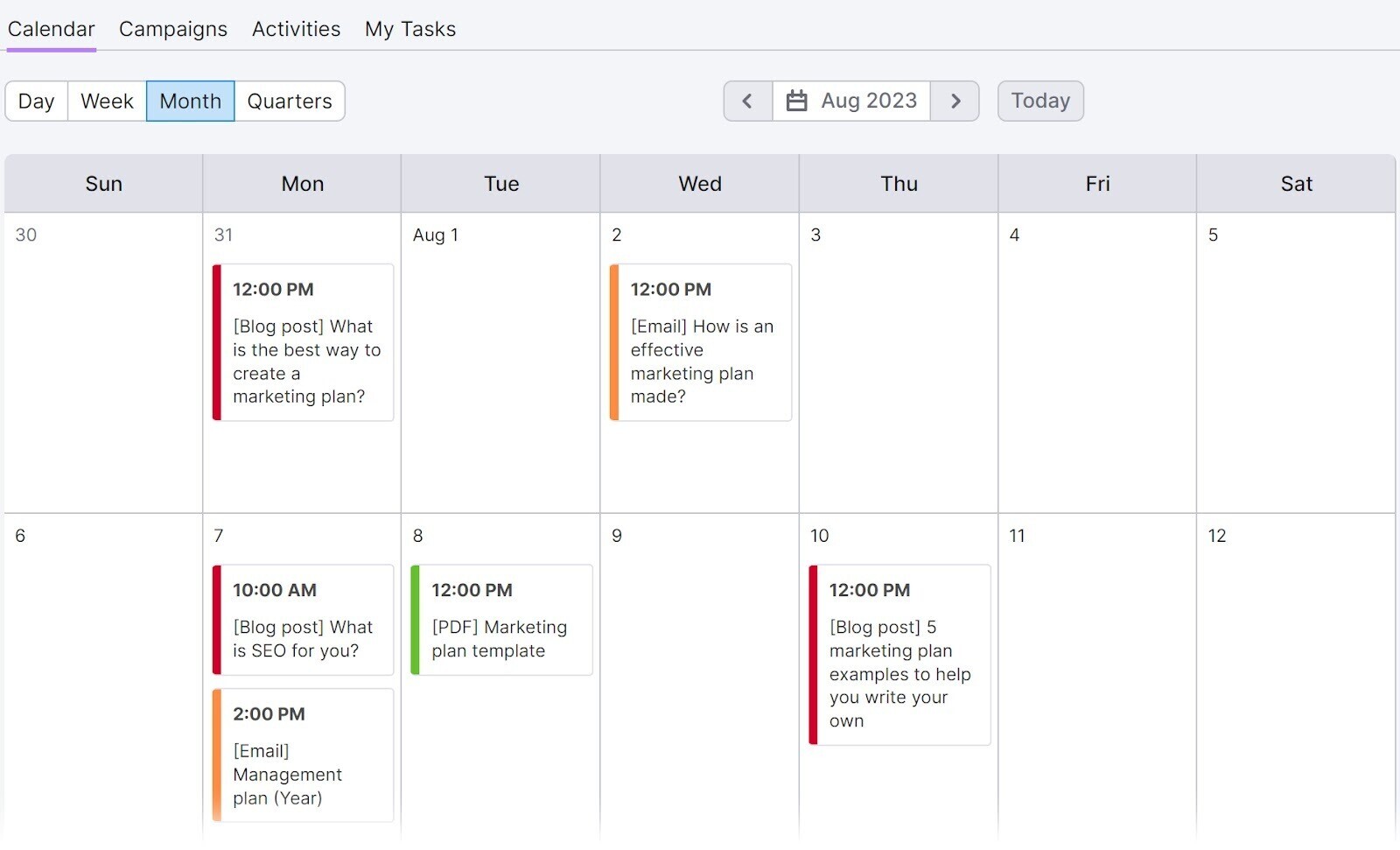
Everyone with access to the account (and everyone the calendar is shared with) can see what’s going on at a high level. And also click into individual projects to learn more about them.
5. Measure the Results
Once you’ve established your channels and are using consistent messaging across all of them, you should measure your results. To establish benchmarks and see what’s working and where there’s room for improvement.
To figure out the most effective parts of your omnichannel strategy, measure metrics like:
- Customer retention rate: Shows how well your omnichannel efforts are retaining customers over time. A higher retention rate indicates that customers are finding value and consistency across channels.
- Customer lifetime value (CLV): Indicates the long-term value of customers who engage with your brand across multiple channels. A higher CLV suggests that your omnichannel strategy is nurturing valuable, long-lasting relationships.
- Customer satisfaction (CSAT): Lets you know how happy customers are with your brand by gathering feedback from customers across channels and calculating the percentage of those who are satisfied
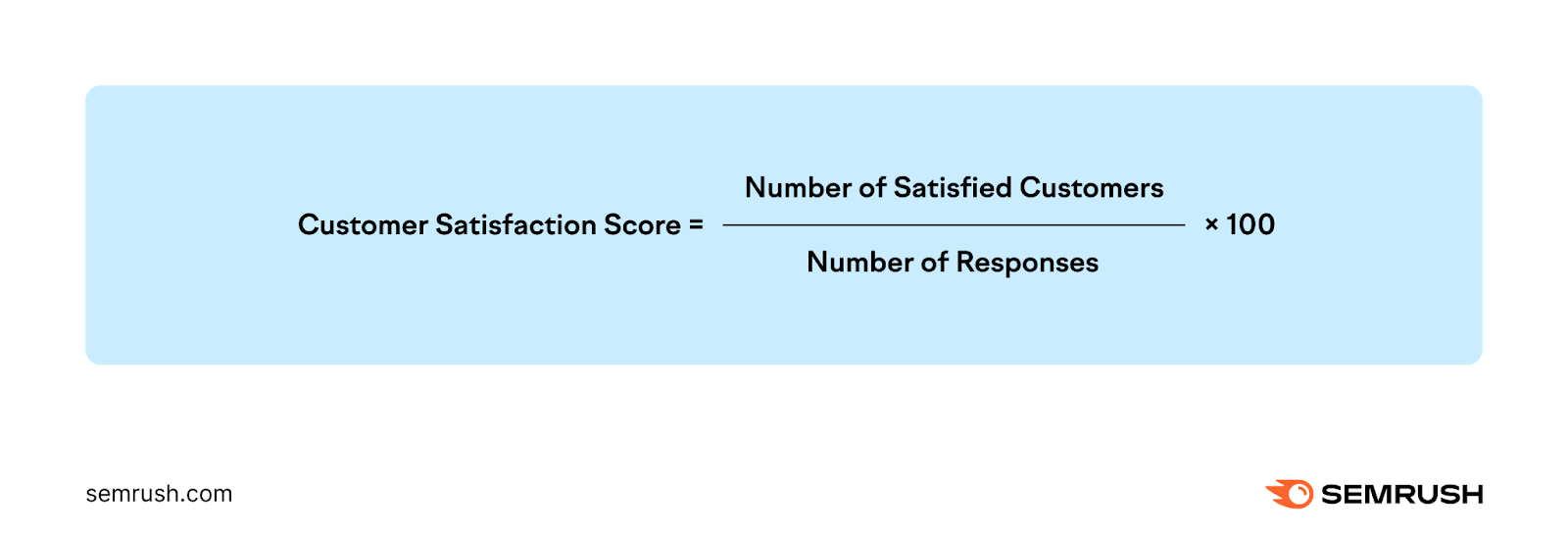
- Net promoter score (NPS): Measures loyalty by asking customers how likely they are to recommend your brand
- Conversion rate by channel: Shows which channels most effectively leading to customers taking your desired action. Use it to determine where to put your resources going forward.
- Channel-specific engagement metrics: Reveals which channels are more effective at driving customer engagement. For instance, monitor engagement metrics like reactions, shares, comments, and click-through rates on social media.
These are just some ideas. The metrics you choose to track should be tailored to your specific goals and industry.
6. Leverage Data to Make Improvements
Once you’ve gathered data around your omnichannel approach, use it to regularly analyze and adapt your approach.
Taking insight-based actions will help you continually improve your omnichannel strategy and enhance the customer experience.
For instance, you may use the data around online engagement to create a more unified retail strategy.
Beauty brand Sephora did just that to create a cohesive shopping experience.
When Sephora learned that online customer engagement was driving its in-store sales, it implemented these tactics to create make the experience more seamless:
- Personalized mobile push notifications with rewards
- Online quizzes that use the answers to personalize recommendations further

- An in-store companion that lets customers check local stock levels in real-time
- Chatbots that book in-store makeovers
- In-store technology that matches a customer’s skin tone with related products
Because of this omnichannel success, the brand’s parent company (LVMH) reported revenue growth of 23% from 2021 to 2022.
Omnichannel Examples
Target
Target’s seamless connection between its brick-and-mortar store and ecommerce experiences provides a great example of omnichannel retailing.
Knowing many of its customers engage in online shopping, Target offers customers different fulfillment options depending on what suits them.
This includes:
- In-store pickup
- Drive-up collection at the store
- Free two-day shipping
- Paid same-day delivery
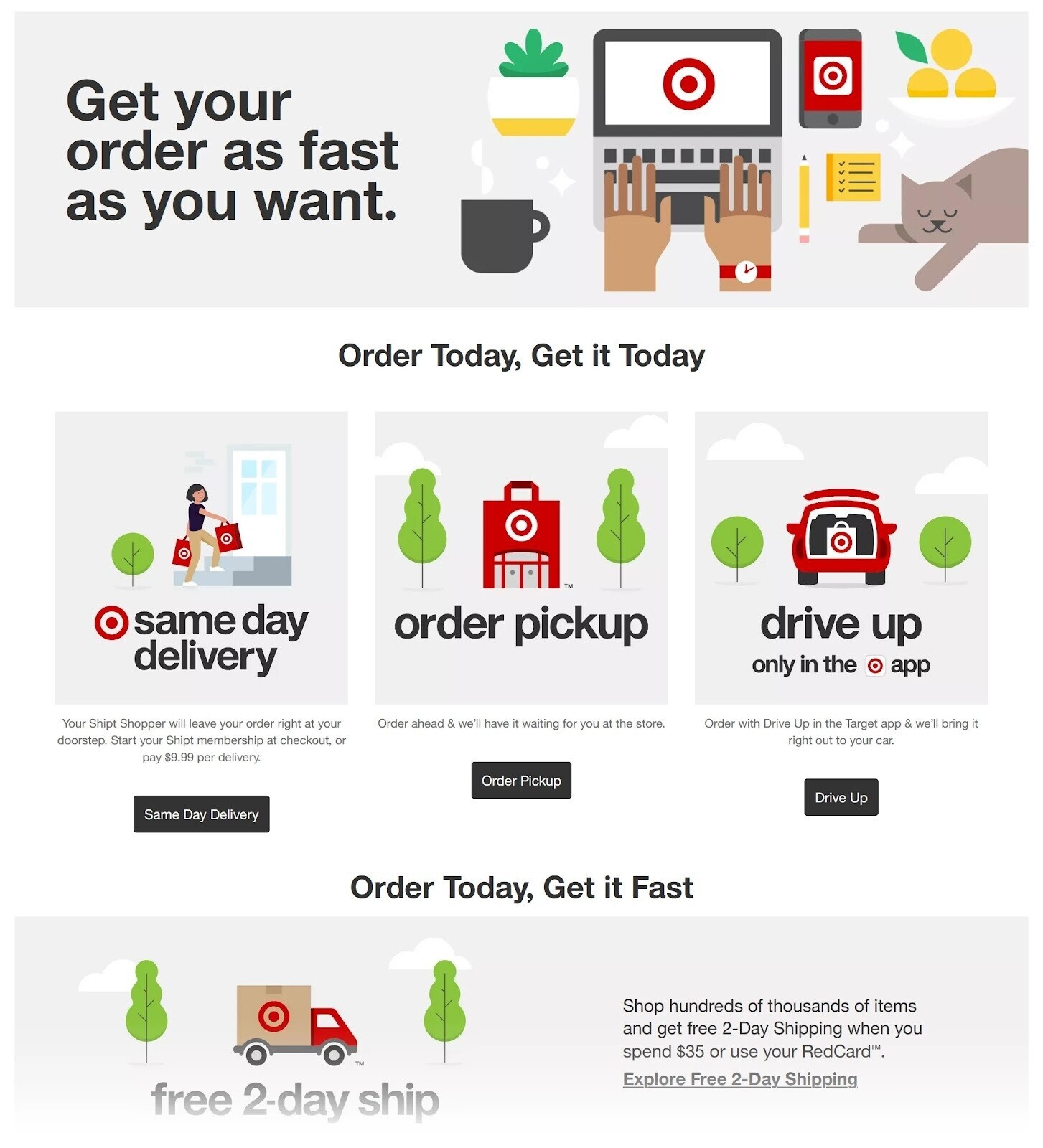
These options connect every channel customers use to browse, purchase, and receive its products.
Though they all happen separately, the connection makes these steps feel like a unified shopping experience.
Starbucks
Starbucks is one of the most-cited success stories for omnichannel marketing campaigns and retail experience because of its data use.
It also has one of the most downloaded restaurant apps with a hyper-personalized AI algorithm that can send customers unique offers.
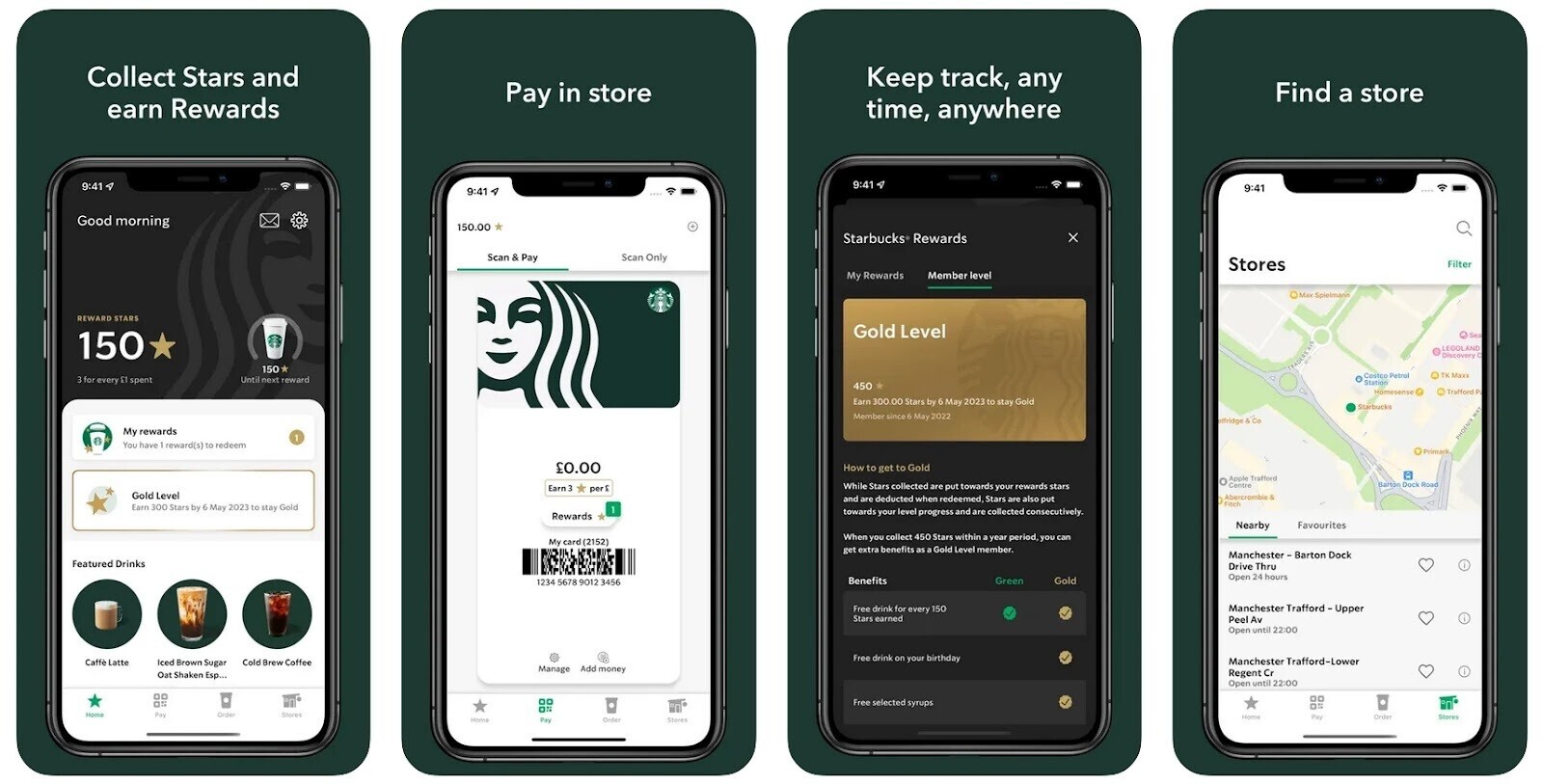
With the Starbucks Rewards app, customers can order in advance but choose to pay in-store.
And customers can even get recommendations for similar beverages based on previous orders, local inventory levels, and the weather.
Are You Ready to Offer Omnichannel?
Don’t take on too much too soon when building your omnichannel strategy. For it to be truly successful, it’s important to go through each step slowly.
Start with research to make sure you won’t be putting time and money into channels your target audience doesn’t care about. Then, choose the technology to make it happen.
Once you’re ready to activate your strategy, use Marketing Calendar to plan your first omnichannel campaign.

